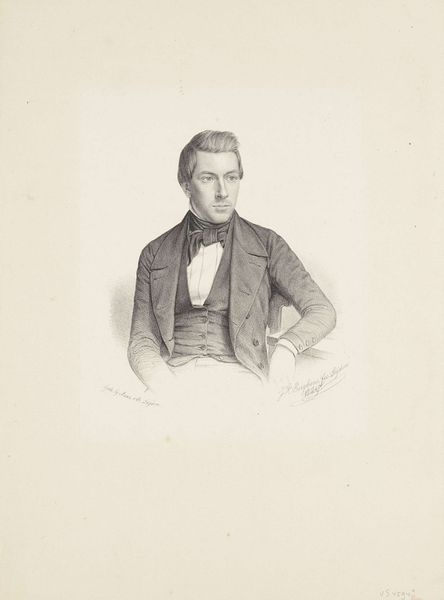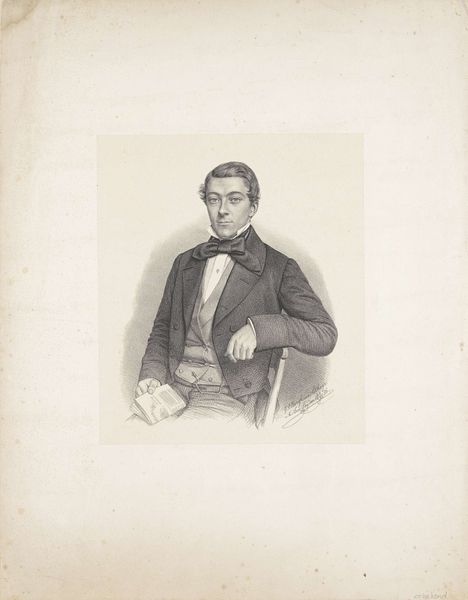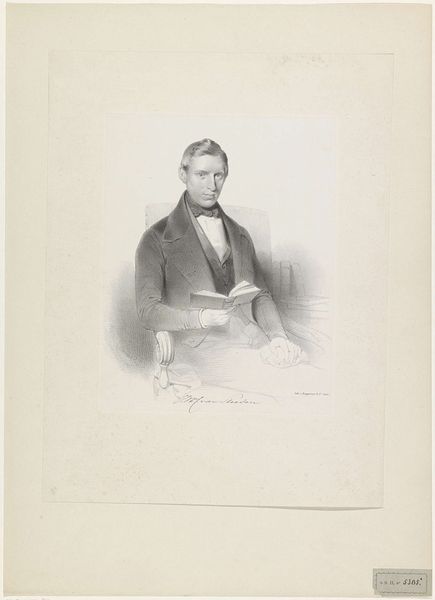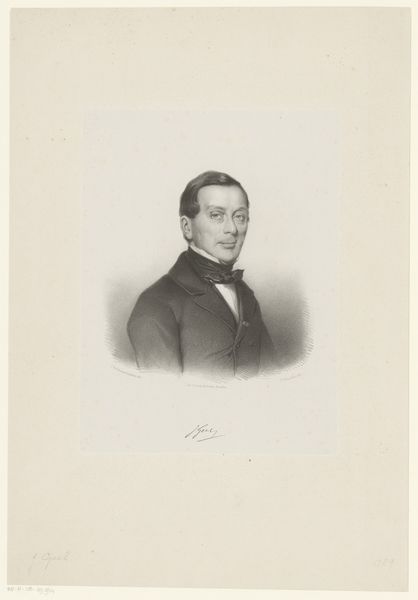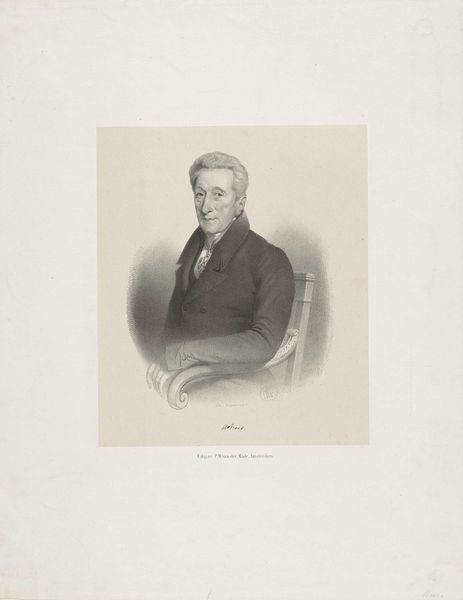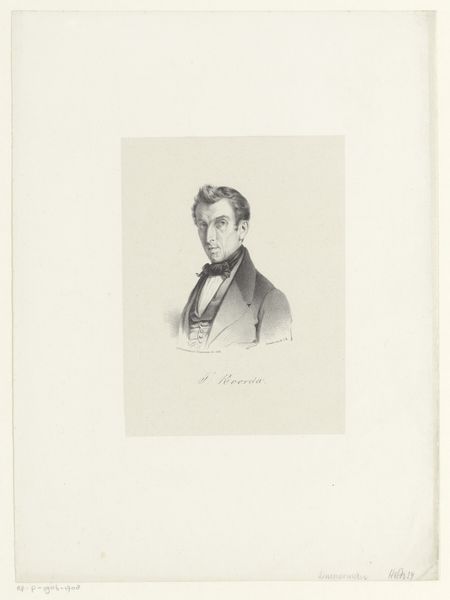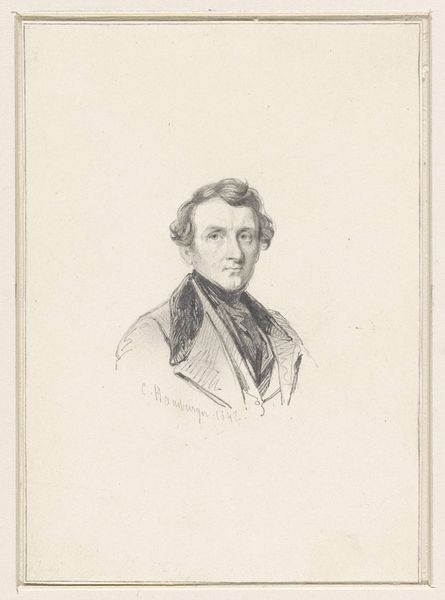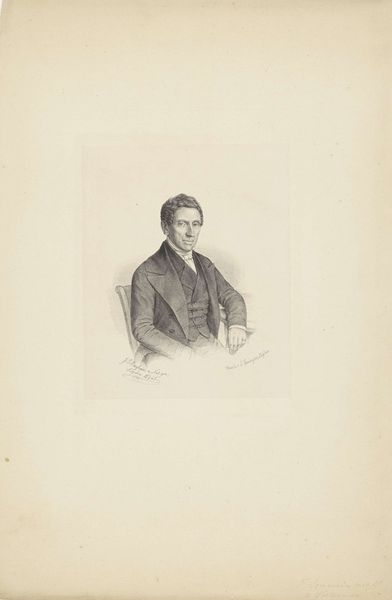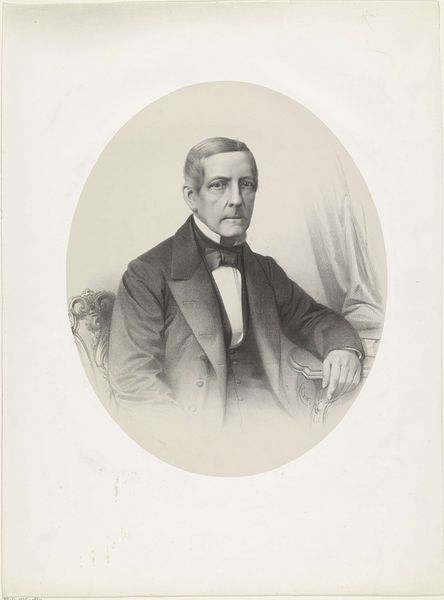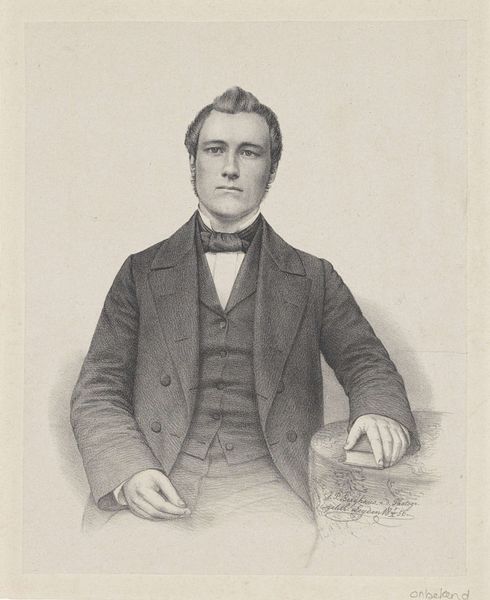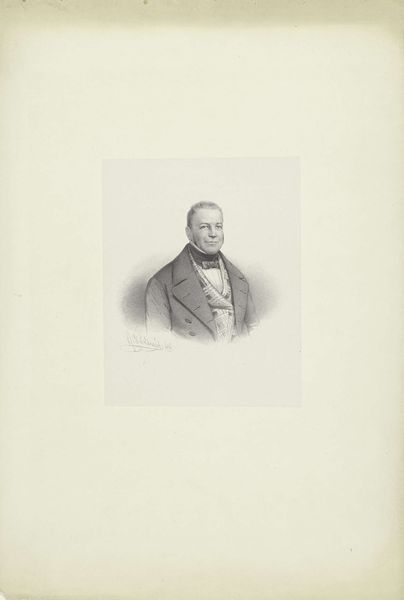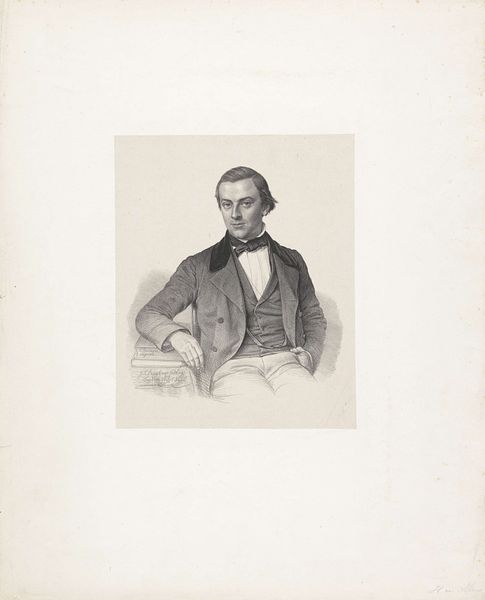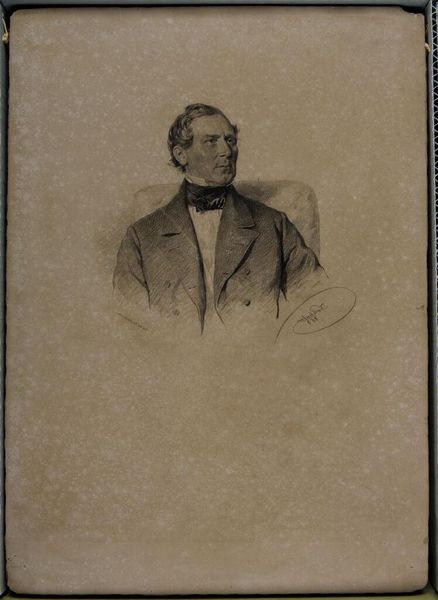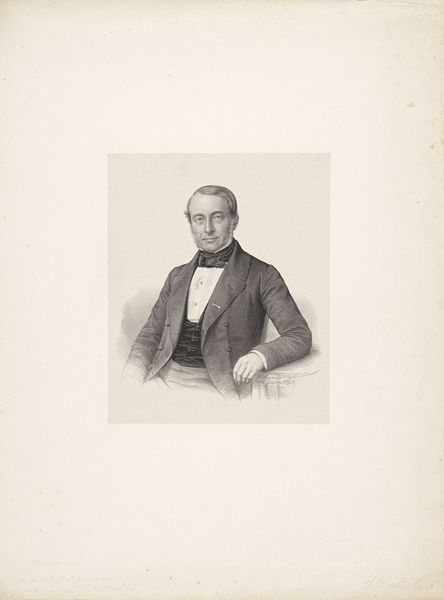
drawing, pencil
#
portrait
#
pencil drawn
#
drawing
#
romanticism
#
pencil
#
realism
Dimensions: height 212 mm, width 175 mm
Copyright: Rijks Museum: Open Domain
Curator: Here we have Coenraad Hamburger’s "Portret van H.A. Klinkhamer," a pencil drawing created in 1843. Editor: It projects such an air of polite reserve. The figure's posture and expression communicate a very constrained sense of masculine identity, wouldn't you agree? Curator: The composition certainly speaks to restraint. Observe the tight, controlled lines of the rendering, the sitter confined within a chair, positioned squarely in the frame. This echoes a specific emphasis on precision. Notice the artist’s delicate rendering of textures in the fabric of his clothing, and the strategic deployment of hatching and cross-hatching to construct form. Editor: And those very fine details also convey much about the sitter’s status. We might contextualize this as a form of elite self-presentation. A respectable 19th-century professional displaying the sartorial signs of bourgeois belonging and perhaps signaling conservative social views through this image? Curator: Such detail absolutely testifies to skill, but I would be more reticent in projecting contemporary concepts about self-presentation and social signaling back into that moment in the 19th century. Still, to understand the piece better, let’s consider its influences in both Romanticism and Realism; how do these intersect here in this specific work, particularly within the field of portraiture at this time? Editor: These elements combine, giving the subject an elevated air—there's a simultaneous capture of his particular likeness as well as an ideal of bourgeois success, both elements very intentional. One does not merely sit and pose for a drawing such as this—a statement is intended. Curator: Of course, and to move forward it’s important that we continue to discuss technique, as in all drawing, value contrast plays a vital role. Look, for example, at the distinct use of light and shadow, shaping not only the form but also creating tonal depth that evokes volume, helping bring forth psychological weight to the figure depicted here. Editor: Yes, this close inspection and the recognition of both artist intention as well as socio-historical frameworks greatly enriches and informs what might otherwise be viewed merely as an exercise in likeness. Curator: Indeed; appreciating it fully, however, necessitates acknowledging its aesthetic form and construction in equal measure. Editor: Precisely! Understanding its cultural and historical nuances alongside its technical prowess creates the kind of fuller perspective that viewers might bring away from a moment here.
Comments
No comments
Be the first to comment and join the conversation on the ultimate creative platform.
